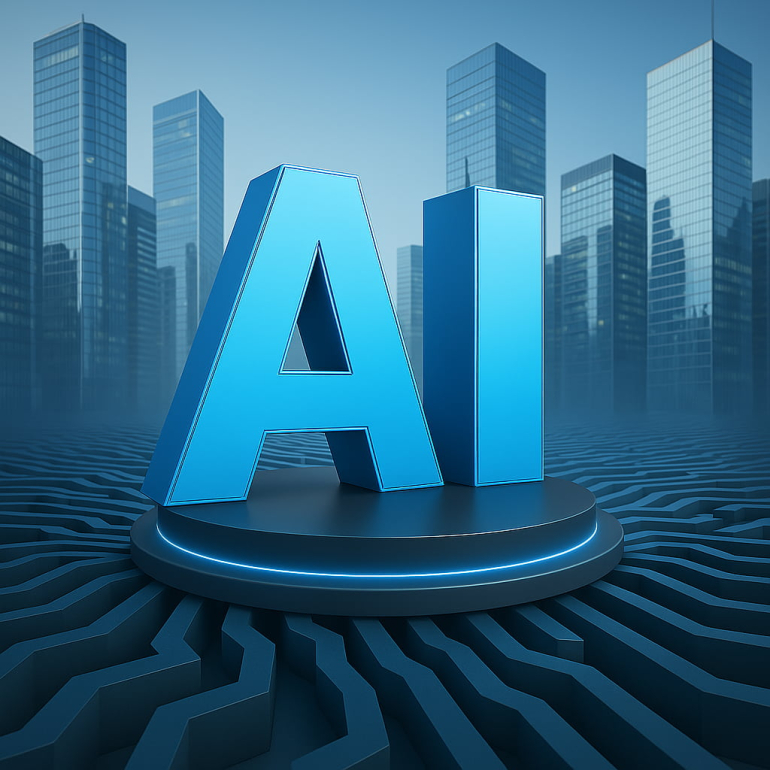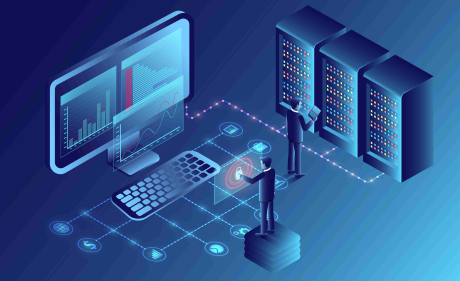What is Artificial Intelligence? How AI Connects to Machine Learning, Deep Learning & Generative AI
Artificial intelligence is considered to mark one of the most profound inflection points of the 21st century. As AI is evolving at an unprecedented pace, it has transitioned from the realm of science fiction to an integral part of our daily lives. From voice-activated virtual assistants like Siri and Alexa to sophisticated algorithms that drive autonomous vehicles, AI is revolutionizing industries and redefining what machines are able to accomplish. But does everybody know what exactly AI is, and how its subfields—machine learning, deep learning, and generative AI—fit into this transformative landscape?
In this article, we will explore the interconnectedness of AI, machine learning, deep learning, and generative AI. We will delve into their individual definitions, functionalities, and applications, illustrating how each component contributes to the overarching goal of creating intelligent systems. By understanding these relationships, we can better appreciate the complexity and potential of AI technologies in shaping the future.

Artificial Intelligence (AI) is one of the most transformative technologies of the 21st century. It encompasses a variety of technologies and applications that enable machines to simulate human intelligence, including learning, reasoning, problem-solving, perception, and language understanding.
Back to topUnderstanding Artificial Intelligence
At its core, AI is the simulation of human intelligence processes by machines, particularly computer systems. These processes include:
- Learning: The acquisition of information and rules for using the information.
- Reasoning: Using rules to reach approximate or definite conclusions.
- Self-correction: The ability to improve performance over time.
- Perception: Interpreting sensory information to identify patterns and objects.
- Language understanding: Processing and understanding human language.
The concepts of AI, machine learning, deep learning, and generative AI are interconnected in a hierarchical and specialized manner, with each building upon and refining the capabilities of the previous. Here's how they relate to one another:
Subfields of AI
AI is not a monolithic technology but a collection of various subfields, each with its own methodologies and applications. Some of the primary subfields include:
- Machine Learning (ML): A subset of AI that focuses on the development of algorithms that allow computers to learn from and make predictions based on data. It includes supervised, unsupervised, and reinforcement learning.
- Deep Learning: A subset of ML that uses neural networks with many layers (deep neural networks) to analyze various factors of data. It has been particularly successful in image and speech recognition tasks.
- Natural Language Processing (NLP): The ability of machines to understand and interpret human language as it is spoken or written.
- Computer Vision: Enabling computers to interpret and make decisions based on visual inputs.
- Robotics: Designing and constructing robots that can perform tasks autonomously or semi-autonomously.
Back to top
Artificial Intelligence (AI)
Artificial Intelligence (AI) is the broadest field encompassing the creation of systems or machines that can perform tasks requiring human intelligence. AI includes a wide range of subfields and applications, from expert systems and robotics to natural language processing and computer vision. AI's goal is to mimic or replicate human cognitive functions such as learning, problem-solving, perception, and decision-making.
Back to topMachine Learning (ML)
Machine Learning (ML) is a subset of AI that focuses on developing algorithms and statistical models that enable computers to learn from and make decisions based on data. Rather than being explicitly programmed to perform a task, ML algorithms identify patterns within data and make predictions or decisions accordingly. ML can be divided into three main types:
- Supervised Learning: Algorithms learn from labeled data and make predictions based on that training.
- Unsupervised Learning: Algorithms identify patterns and structures in unlabeled data.
- Reinforcement Learning: Algorithms learn through trial and error, receiving rewards or penalties based on their actions.
Deep Learning
Deep Learning is a specialized subset of machine learning that involves neural networks with many layers (hence "deep" learning). It is particularly effective for large-scale data and complex tasks such as image and speech recognition, natural language processing, and autonomous driving. The key characteristics of deep learning include:
- Neural Networks: These are computational models inspired by the human brain, consisting of layers of interconnected nodes (neurons).
- Layers and Depth: Deep learning models have multiple hidden layers that allow for hierarchical feature extraction and abstraction.
- Activation Functions: Non-linear functions applied to the output of neurons to introduce non-linearity into the model, enabling it to learn complex patterns.
- Backpropagation: The algorithm used to adjust weights in the neural network by minimizing the error between the predicted and actual outputs.
Generative AI
Generative AI is a subset of deep learning focused on generating new, synthetic content based on learned patterns from training data. Generative AI can produce text, images, music, and other types of media. Some key generative AI techniques include:
- Generative Adversarial Networks (GANs): Consist of a generator network that creates new data and a discriminator network that evaluates the data's authenticity. The two networks train in opposition to improve the quality of the generated data.
- Variational Autoencoders (VAEs): Encode input data into a lower-dimensional space and then decode it back to the original space, allowing for the generation of new data samples by sampling from the latent space.
- Transformer Models: Particularly in natural language processing, models like GPT (Generative Pre-trained Transformer) generate coherent and contextually relevant text based on input prompts.
Interconnections
Hierarchical Structure
- AI is the overarching field: It encompasses all aspects of creating intelligent systems capable of performing tasks that require human intelligence.
- ML as a subset of AI: ML provides the means for AI systems to learn from data and improve over time, making them more flexible and adaptive.
- Deep Learning as a subset of ML: Deep learning is a more advanced form of ML, utilizing neural networks to model complex patterns in large datasets.
- Generative AI as a subset of Deep Learning: Generative AI focuses specifically on creating new content, leveraging the deep learning framework to generate realistic and high-quality outputs.
Example Workflow
To illustrate these interconnections with an example:
- AI Application: Developing an AI-based personal assistant.
- ML Component: Using machine learning algorithms to enable the assistant to understand and respond to user queries.
- Deep Learning Techniques: Implementing deep learning models to improve speech recognition, natural language understanding, and response generation.
- Generative AI Models: Using generative AI to create more natural and human-like responses, enhancing the overall user experience.
Synergies and Advances
- Transfer of Techniques: Innovations in deep learning often benefit broader ML applications, and advances in ML improve the overall capabilities of AI systems.
- Collaborative Development: Techniques like transfer learning, where models pre-trained on large datasets are fine-tuned for specific tasks, illustrate the synergy between general ML and specialized deep learning approaches.
- Cross-Pollination of Ideas: Concepts from generative AI (e.g., GANs) have inspired new methods for improving the robustness and creativity of AI systems in various domains.
Challenges and Future Directions
- Data and Computational Requirements: As we move from AI to ML to deep learning and generative AI, the need for large datasets and computational power increases.
- Ethical Considerations: The more advanced the AI technology, the greater the need for ethical guidelines to address issues like bias, privacy, and the potential for misuse.
- Interdisciplinary Research: The future of these interconnected fields will likely involve more interdisciplinary research, combining insights from computer science, neuroscience, cognitive science, and ethics.
In summary, AI, ML, deep learning, and generative AI represent a progression of increasingly specialized and powerful techniques for creating intelligent systems. Each builds upon the other, contributing to advancements in how machines learn from and interact with data and the world.
Back to topThe Evolution of AI
The evolution of AI can be traced back to the mid-20th century when pioneers like Alan Turing and John McCarthy laid the groundwork. Over the decades, AI has progressed through various phases, from symbolic AI and expert systems in the 1960s and 1970s to the data-driven approaches of today.
Key Milestones in AI Development
- 1950s: Alan Turing proposes the Turing Test to define machine intelligence.
- 1956: John McCarthy coins the term "Artificial Intelligence."
- 1980s: The advent of expert systems, which mimic the decision-making abilities of a human expert.
- 1997: IBM's Deep Blue defeats world chess champion Garry Kasparov.
- 2012: Breakthroughs in deep learning, particularly in image recognition, marked by AlexNet's success in the ImageNet competition.
- 2016: Google's AlphaGo defeats Go champion Lee Sedol, showcasing the potential of deep reinforcement learning.
The Role of Data in AI
Data is the lifeblood of AI. Machine learning models rely on vast amounts of data to learn and make accurate predictions. The quality and quantity of data directly impact the performance of AI systems. McKinsey highlights that data is a critical enabler of AI, with companies leveraging big data analytics to gain insights and improve decision-making processes .
Data Sources for AI
- Structured Data: Organized data that is easily searchable, such as databases and spreadsheets.
- Unstructured Data: Data that is not organized in a pre-defined manner, such as text, images, and videos.
- Semi-Structured Data: Data that does not conform to a rigid structure but has some organizational properties, such as JSON and XML files.
AI Applications Across Industries
AI's applications are vast and varied, spanning multiple industries and transforming traditional business processes.
Healthcare
AI is revolutionizing healthcare through applications in diagnostics, personalized medicine, and patient care. For instance, machine learning algorithms can analyze medical images to detect diseases like cancer with high accuracy. According to Deloitte, AI-powered diagnostic tools are enhancing the accuracy of diagnoses and enabling early detection of diseases, leading to better patient outcomes .
Case Study: IBM Watson
IBM Watson, a leading AI platform, has been instrumental in transforming healthcare. Watson's AI algorithms can analyze vast amounts of medical literature and patient data to provide oncologists with evidence-based treatment recommendations. This has significantly improved the speed and accuracy of cancer diagnosis and treatment planning.
Finance
In the finance industry, AI is used for fraud detection, risk management, trading algorithms, and customer service. Machine learning models can detect unusual patterns in transaction data, helping to identify and prevent fraudulent activities. McKinsey notes that AI-driven fraud detection systems are significantly more effective than traditional rule-based systems .
Case Study: JPMorgan Chase
JPMorgan Chase has implemented an AI system called COiN (Contract Intelligence) to analyze legal documents and extract important data points. This has reduced the time required to review documents from hundreds of thousands of hours to seconds, demonstrating the efficiency and cost-saving potential of AI.
Retail
AI is transforming the retail sector by enhancing customer experiences, optimizing supply chains, and personalizing marketing strategies. Predictive analytics and recommendation engines help retailers anticipate customer needs and preferences, leading to more personalized shopping experiences. EY reports that AI is helping retailers increase sales and customer loyalty by providing personalized recommendations and targeted promotions .
Case Study: Amazon
Amazon's recommendation engine, powered by AI, analyzes customer data to suggest products that are likely to interest them. This personalization has been a key driver of Amazon's success, contributing significantly to its revenue growth.
Manufacturing
In manufacturing, AI is used for predictive maintenance, quality control, and optimizing production processes. AI algorithms can predict equipment failures before they occur, allowing for timely maintenance and reducing downtime. Deloitte highlights that AI-driven predictive maintenance can reduce maintenance costs by up to 20% and decrease unplanned outages by up to 50% .
Case Study: General Electric (GE)
General Electric uses AI to monitor its jet engines and other industrial equipment in real-time. By analyzing data from sensors embedded in the equipment, GE can predict when maintenance is needed, preventing costly breakdowns and improving operational efficiency.
Back to topChallenges and Ethical Considerations
Despite its potential, AI presents several challenges and ethical considerations that must be addressed.
Data Privacy and Security
The collection and use of vast amounts of data raise concerns about privacy and security. Ensuring that data is stored securely and used ethically is paramount. According to EY, organizations must implement robust data governance frameworks to protect sensitive information and comply with regulations such as GDPR .
Bias and Fairness
AI systems can inadvertently perpetuate or even exacerbate existing biases present in the data they are trained on. This can lead to unfair outcomes in critical areas such as hiring, lending, and law enforcement. McKinsey emphasizes the importance of developing unbiased AI models and implementing fairness checks to ensure equitable outcomes .
Job Displacement
The automation potential of AI poses a risk of job displacement, particularly for roles involving repetitive tasks. However, AI also creates new job opportunities, particularly in fields such as AI development, data science, and AI ethics. Deloitte suggests that organizations should focus on reskilling and upskilling their workforce to prepare for the AI-driven future .
Back to topFuture Prospects of AI
The future of AI is promising, with continued advancements expected to drive further innovation and transformation across industries. Emerging trends include:
Explainable AI
As AI systems become more complex, there is a growing need for explainability. Explainable AI aims to make AI decisions transparent and understandable to humans, which is critical for trust and accountability. McKinsey notes that developing explainable AI systems is essential for their widespread adoption in high-stakes areas like healthcare and finance .
AI and IoT
The integration of AI with the Internet of Things (IoT) is set to unlock new possibilities. AI can analyze data from connected devices to optimize operations, enhance user experiences, and enable smart environments. EY highlights that the convergence of AI and IoT will drive the next wave of digital transformation .
AI in Autonomous Systems
Autonomous systems, such as self-driving cars and drones, are becoming increasingly viable with advancements in AI. These systems have the potential to revolutionize transportation, logistics, and other sectors by improving efficiency and reducing human error. Deloitte predicts significant growth in the deployment of autonomous systems in the coming years .
Conclusion
Artificial Intelligence is a powerful technology that is reshaping industries and society. From healthcare and finance to retail and manufacturing, AI's applications are vast and transformative. However, with great power comes great responsibility. Ensuring data privacy, addressing bias, and managing job displacement are critical challenges that must be navigated to harness AI's full potential.
As we move forward, the continued collaboration between technology developers, businesses, and policymakers will be essential to create a future where AI benefits all. By embracing the opportunities and addressing the challenges, AI can drive unprecedented innovation and progress, ushering in a new era of technological advancement.
References
- McKinsey & Company. (2023). "The state of AI in 2023: Generative AI’s breakout year."
- Deloitte Insights. (2023). "AI and the future of work: Preparing now for what comes next."
- EY Global. (2023). "How AI is transforming the retail sector."







Comments